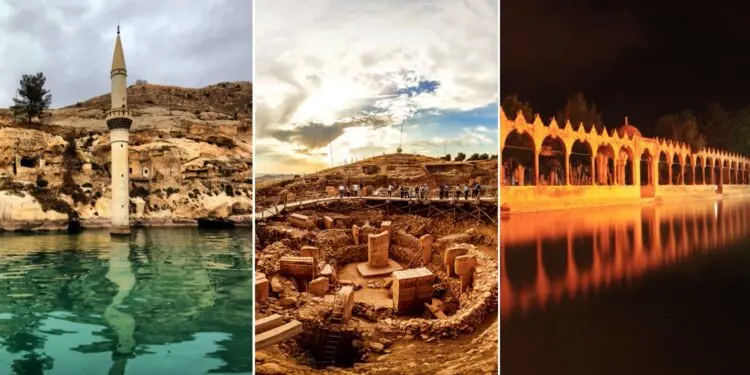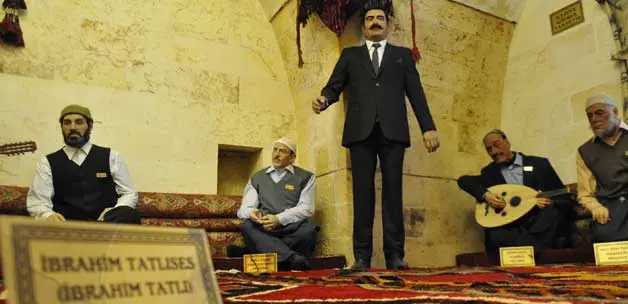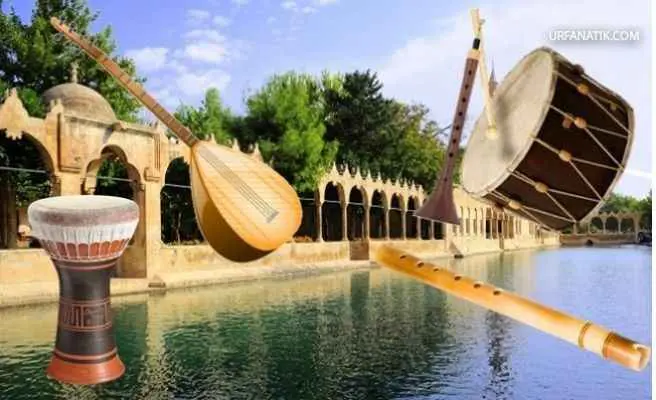Travel in the heart of Sanliurfa
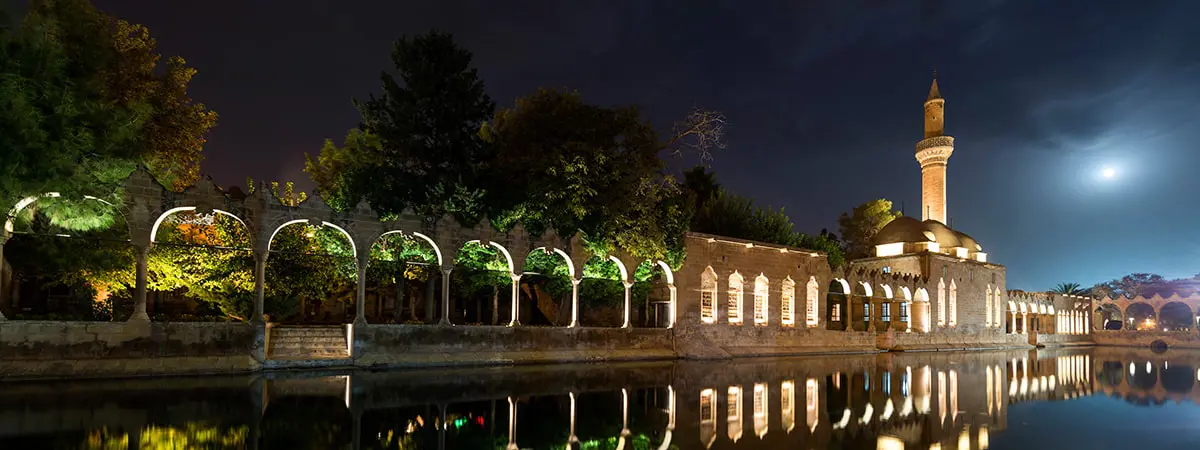
The Biggest Museum Complex of Turkey - Şanlıurfa Museum
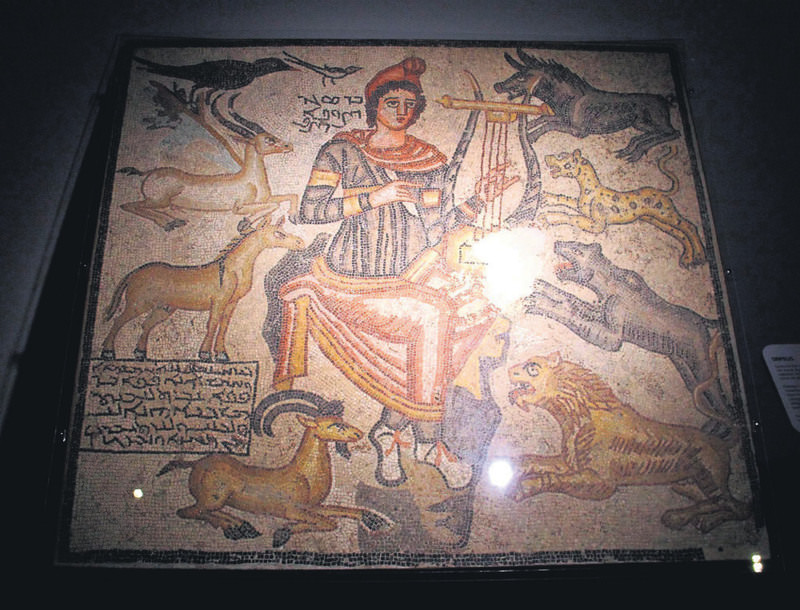
Steps were taken to build a museum in Şanlıurfa in 1948 with the collection of ancient artefacts and storing them in Atatürk primary school. Then these artefacts were moved to Şehit Nusret primary school. In 1965 construction of our museum started and in 1969 it was opened to visit. As a result of too much artefacts, the museum in Şehitlik area could be used by 2014.Şanlıurfa Archaeological Museum was moved to its new place in Haleplibahçe in 2015.
Şanlıurfa museum is the 5th biggest museum of Turkey with its 74.000 artefacts. Wide variety of artefacts from Palaeolithic era to today’s world can be seen in Şanlıurfa Museum. “The oldest statue of the world the 12.000 year-old Balıklıgöl statue” is on display in our museum.
Şanlıurfa is the most excavated province of Turkey with the number of provincial excavation. Thus, city centre and two district centre are announced as archaeological site. In other word, Şanlıurfa is merely an “open-air museum”. Due to all these features, Ministry of Culture and Tourism decided to build two museum, one of them as archaeological the other as mosaic museum in Haleplibahçe. Haleplibahçe Mosaic Museum, which is built as new Şanlıurfa Museum and Mosaic museum, came into service in 24 May 2015.
Şanlıurfa Kurtuluş Museum (Mahmud Nedim Palace)
It is nearby old state hospital. It was built in 1903.The palace, which are spread over a very wide area, has the characteristic of both European palace architecture and traditional house architecture of Urfa and this big palace consists of two separate parts for men and women. In the 1940s the public theatre made performances in this building. Palace was renovated by the Governorship of Şanlıurfa and served as “Şanlıurfa Kurtuluş Museum” on April 11, 2009. A part of the palace is assigned for state choir of Turkish Folk Music. Moreover a hall in the palace was arranged as Müslüm Gürses Music Museum.
Fırfırlı Mosque (Church of twelve apostles or church of saint apostles)
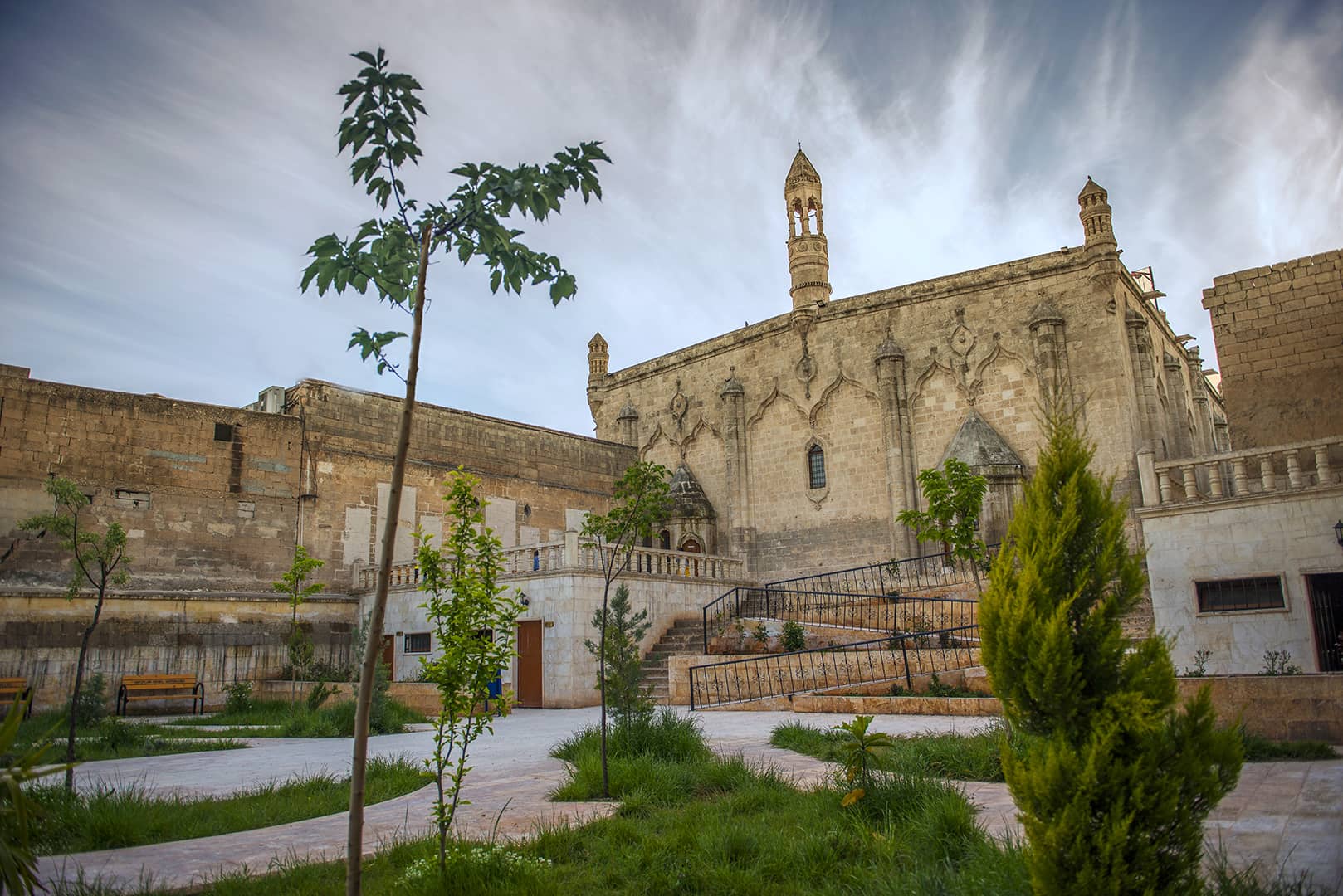
The building is located on Vali Fuat Bey Street and is built as a church, known as Twelve Apostles’ Church. While it has materials like wind rose, it was colloquially named as “Fırfırlı Church” in the Ottoman period. According to the sources, Varak Cross, which has a great importance for Christianity and founded in Varak Monastery in Van, was placed to this church after being brought to Urfa in 1092. Church was turned into a Mosque in 1956 according to the mihrab on the Mosque. A special name wasn’t used during the transformation, “Fırfırlı Mosque” name was used due to the wind roses placed on it. Some of the important features of the building are half columns and ornaments on the stone wall in the facades.
Selahaddin Eyyubi Mosque (Church of Saint Johannes Prodromos Addai)

The building is located on Vali Fuat Bey Street. It is estimated that it was constructed in 457 on the church of St. John the Baptist which was constructed by bishop Nona in the early of 19th century. It was named as cathedral because of being the biggest church in the region and its period. Through long ages the building was ruin and for some period of time it was used as power plant. In 28 May 1993 it was renovated and opened to worship as a Mosque. The entrance of the mosque is westward and last congregation place is made by using former church’s narthex (entry part).Worship place is lightened with quite wide windows. There are half columns and rattled dragon ornaments, remained from the former church, in the window ledges of the building. It was named as Selahaddin Eyyubi Mosque when it was transformed in to a mosque, because it was used as a mosque for the first time in the period of Selahaddin Eyyubi. The Mosque was repaired by General Directorate of Foundations in 2010-2011.
Küçük Hacı Mustafa Hacıkamiloğlu Palace
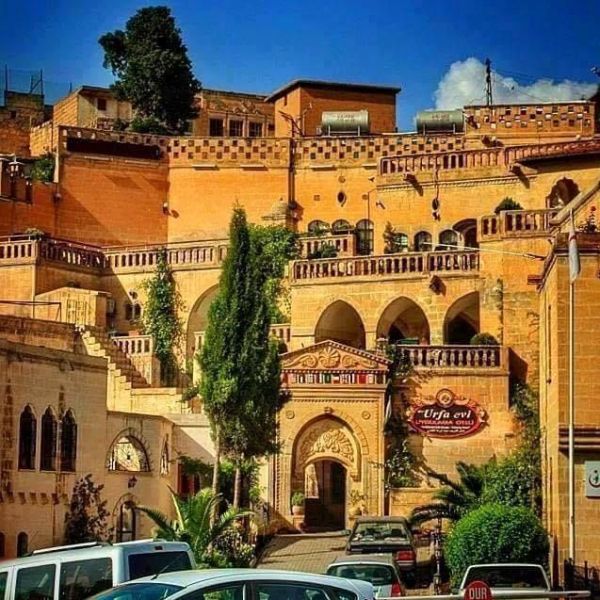
It is placed at the part of Vali Fuat Street, near by Halil ür-Rahman Lake, opposite of Selahaddin-I Eyyubi Mosque. This ancient palace was constructed in the second half of the 19th century. It has two separate part for men and women (Haremlik and Selamlık). Its construction material is face stone. Palace is bought by the Governorship of Urfa in the name of Special Provincial Administration with the supports of former governor Cemal Mirkelamoğlu in 1991.
Warrior Queen of Amazon Penthesileia
In the excavations, made in Haleplibahçe near by the Halil ür-Rahman in 2007,the mosaic of hunting scene of women who fought against the domination of men was founded at the culture basin extending along from Aegean to Black Sea and the inside of Anatolian 3000 years ago. The Mosaic was founded by Assistant Professor Dr.Bahattin Çelik and Archaeologist Ali Uygun.
The most important features of Haleplibahçe mosaics is that being “the single sample in the world figured on mosaic with the names of warrior queens of Amazon”. Experts define the Haleplibahçe Mosaics as the most precious mosaics of the world” because of its technic, art and being made of original 4*2mm stones of Euphrates and similar features of it.
At the first stage, 100m2 mosaics were brought to light in Halepli Bahçe with the work of the Şanlıurfa Archaeological Museum and archaeologists by the help of Şanlıurfa Governorate. In the kerb of Hunting Scene, it was given place to geometrical motifs, plant patterns, pigeon, Eros without wings, squirrel, duck, partridge, gazelle and greyhound figures .At the corners of the kerb surrounding the mosaics, the four amazon queens, reflected to public opinion as “Edessa Beauty”, –Hippolyte, Antiope, Melanipe and Penthesileia- were pictured in the main scene as hunting with the their unique dresses as one breasted and it was given place to their ancient Greek names.
Different mosaics were unearthed as a result of excavations conducted in Haleplibahçe. One of the most important of these mosaics is the hero of Trojan War Achilles (Akileus).In the region the floor mosaics about the Achilles life story were unveiled by the archaeologists of Şanlıurfa Museum.
The floor-heating bath, which is unveiled during the excavations and dating to Roman period, revealed how important settlement place the region is.
Because of all these features Ministry of Culture and Tourism decided to build two museum as archaeological and mosaic museum. New Şanlıurfa Museum and Haleplibahçe Mosaic Museum, the one built for mosaics, came into service in 24 May 2015.
Halil-ür Rahman lake (The lake with fish) Halil-ür Rahman Mosque (Döşeme Mosque) and madrasah
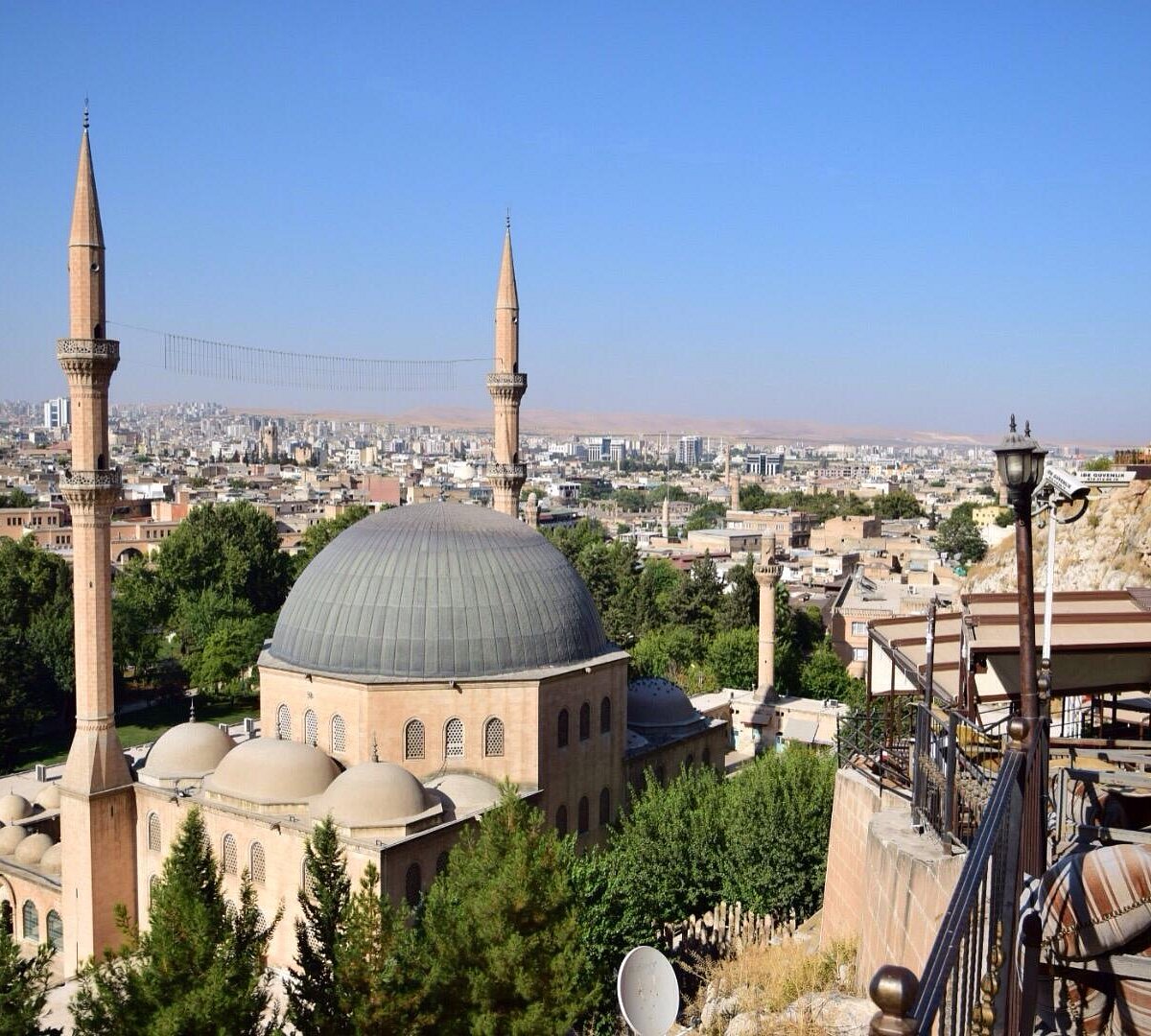
The mosque is nearby Halil ür-Rahman Lake. The mosque is named also colloquially (Döşeme Mosque).In 504 priest Urbisyus had a house built for the Virgin Mary, mother of Jesus Christ. It is on the books as “house of virgin Mary”, it was turned into mosque in the abbasid khalifa Me’mun period (813-833).The minaret was repaired by El Melik’ül Eşref Muzafferüddin Musa, nephew of Selahaddin Eyyubi in around 1211-1212.The building was renovated in the period of Suleyman the magnificent (1520-1566).In 1810 the building had extensive renovation. Evliya Çelebi mentioned from this mosque as “İbrahim Halil Monastery” in his “Seyahatname”.
Rızvaniye Mosque and Madrasah

The mosque is located at the north of the Halil ür-Rahman Lake and built by governor of Rakka Rıdvan Ahmet Paşa in 1736 (Hijri.1149).It is built in parallel with mihrab and three domes. The minaret with one minaret balcony is located at the east of the mosque. Sanctuary part is made of two different colour materials. Sanctuary part is quite bright with its windows that can be opened in every direction. The most interesting part of the building in terms of ornaments is the entrance door. Rich plant and geometrical figures is placed on the door. Madrasah is located at the north of the mosque courtyard.
Aynzeliha Lake (Anzılha Lake)
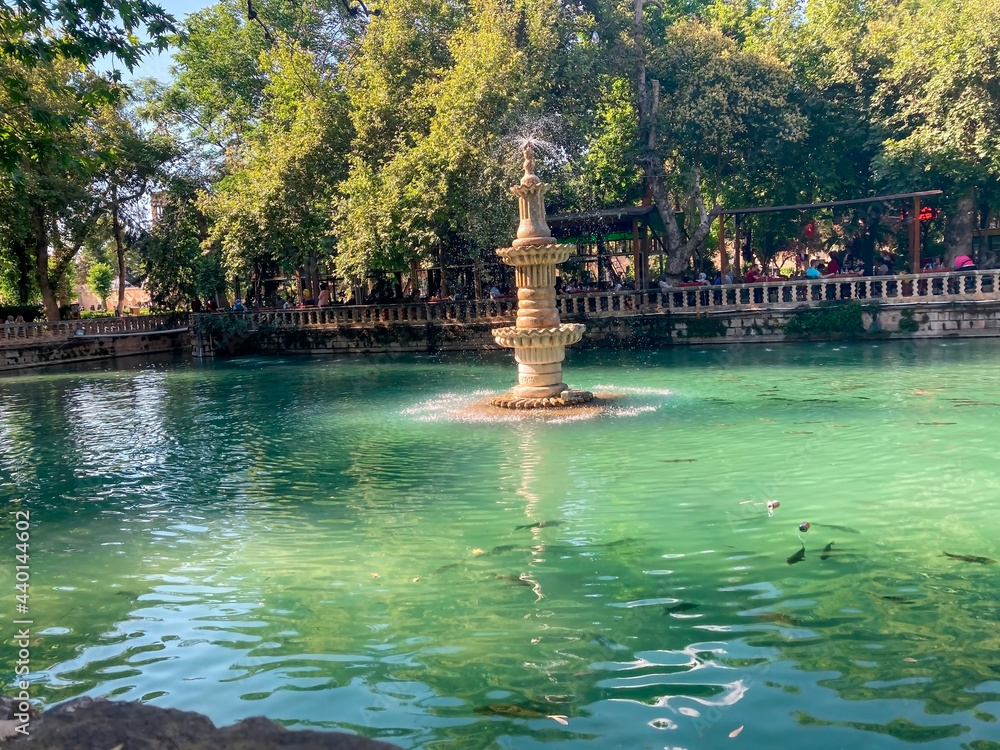
It is right at the south of Halil-ür Rahman Lake, in front of Urfa castle and 150m2 wide. The fishes in the lake are not eaten while they are believed to be sacred. According to the tales, while Prophet Abraham was being thrown into fire, Zeliha, daughter of Nemrut, said that she believed in Abraham’s religion and thrown into fire by his father. Zeliha burned to death. Then a lake was formed where Zeliha fell. And this lake named “Aynzeliha (Zeliha Lake or fountain).
Urfa Castle

It is estimated that the Urfa Castle was built on a Neolithic area dates from 10.000 B.C. The 12.000 years old Balıklıgöl Statue, unveiled just beside the castle and displayed in Şanlıurfa Museum, and Castle area lay bare the history of Balıklıgöl basin. The castle isn’t mentioned in the records dated from 6.century.The first records about the castle dates back to 11th century. Accordingly the castle can be dated between 6 th and 11th Century. The general opinion is that it was built between the years 812-814 A.D in the Abbasids period. The two Corinth headed columns on the castle were made by the King of Edessa 9th Manu in 240-242 A.D as a memorial columns. On the Syriac epigraph on the south column it is written: “I am the son of military commander Barşamaş (Son of the Sun) Aftuha. I built this column and the statue on it for the daughter of crown prince Manu, wife of the king Manu, my lady and my precious queen Şalmeth”. Three sides of the castle is surrounded by the stone carved gutter. Moreover the gateway is provided between the castle and Aynzeliha Lake with the Aynzeliha Tunnel.
Mevlid-I Halil Mosque and Cave (The place where Prophet Abraham born)
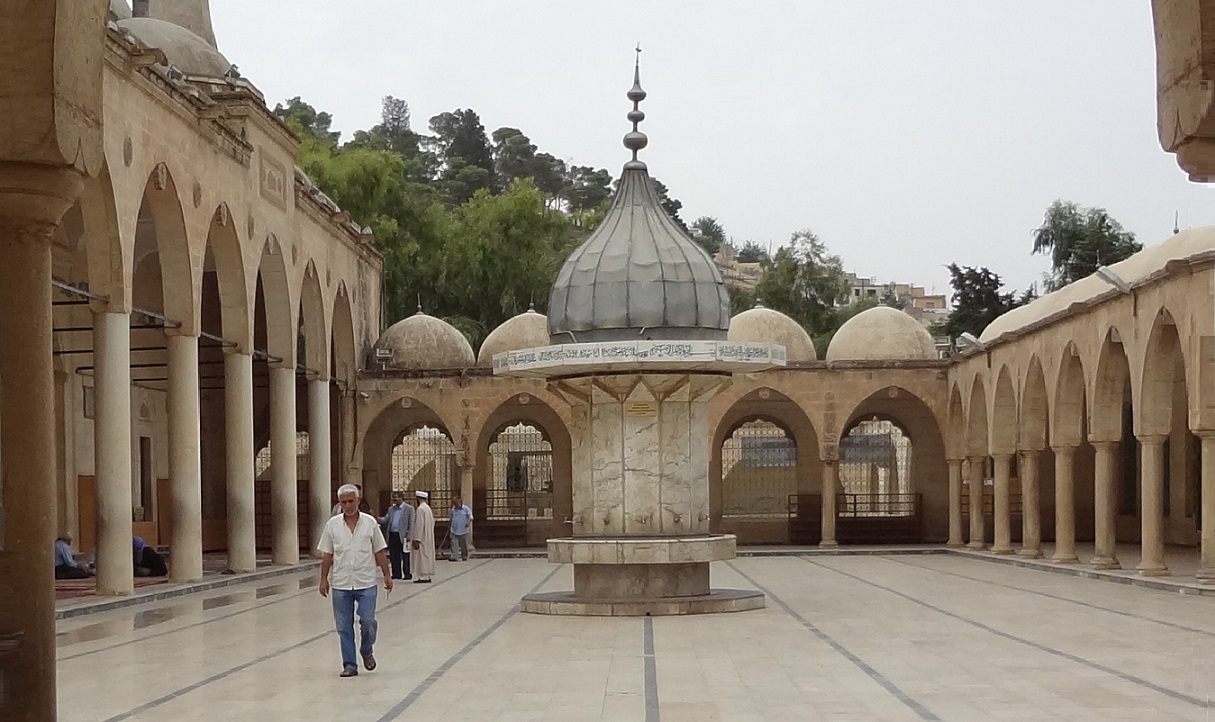
Mevlid-I Halil Mosque is located near the Lake with Fish in Islamic monastery plateu. Mevlid means “holy birth”. Mosque is named “Mevlid-I Halil Mosque”, because it is believed that Prophet Abraham born in the cave near by the mosque. According to current records, the building had 5 big phase. Firstly, in the period of Seleucid Empire a pagan temple was built in the place. In the Jewish period it is mentioned about the existence of a synagogue. In the first period of Christianity, a church was built in the name of “Church of Christians” in 150 AD. In the period of Byzantines Hagia Sophia of Urfa was built in the place. Lastly, in the period of Ottomans a Mosque was built by Mustafa Salih Pasha in 1523. The water comes from Mevlid-I Halil cave is believed to be the most healing water after Zam-zam by the public.
Hüseyniye Bazaars (Coppersmiths Bazaar)

The Bazaars is located in Hanlar region. It is two bazaar which lies collaterally towards south and west and each of them is covered with fifteen cross vault. Bazaars were built by Hartavizade Hüseyin Ferideddin in 1887. There are lightening windows above the doors of the stores on the right and the left. It was used as the place in which rug, carpet, mat and other similar rugs are sold. For some time it was used as kerchief bazaar and lastly it is allocated to Coppersmiths. One of the bazaars is used by Coppersmiths and the other is used by Jeweler.
Kazzaz Bazar (Covered Bazaar)
It is located in the south of Gümrük Han and built in 1562. The bazaar mentioned in the Endownment of Rızvan Ahmet Paşa dated 1740 as “Bezzazistan” and it says it was repaired. The covered bazaar is made of cutting stones. It has four doors: The east door opening to Han Önü Bazaar, The west door opening to Sipahi Bazaar, The south door opening to Pamukçu Bazaar and the north door opening to Gümrük Han. The west door was opened after the deterioration of one store in Sipahi Bazaar. The stores in the both sides of the bazaar were one meter high from the ground but Şanlıurfa Provincial the Foundation of Culture, Education, Art and Research put it down to level ground in the renovating process. The stores in the bazaar sell locale male and female dresses and accessories. Şanlıurfa Covered Bazaar is one of the few bazaars in Anatolia which could preserve its authentic values.
Gümrük Han

It is located in Hanlar region. It is built by the flag officer of Urfa Halhallı Behram Paşa in the period of Suleyman the Magnificent in 1563. It is mentioned in the travel book of Evliya Çelebi as “Yetmiş Hanı” and it is known as “Alaca Han” because of the colourful cutting stones covering its exterior. The water of Halil ür-Rahman Lake flows through its yard. There are teahouses in the yard of this two-story Han. The upperside of the entrance hall is utilized as prayer room. It was restored in 2001 by Şanlıurfa Province the Foundation of Culture, Education, Art and Research with the help of Rızvaniye Foundation.
Mevlevihane Mosque
It is located in the east of Haşimiye Square and built in 18th century for mevlevis as a lodge for mevlevi dervishes. After the closure of lodges, the building was opened to worship as mosque. The building was restored by the general directorate for foundations. The mosque is planned as square and covered with one dome. The bazaar adjacent to the west side of the building was before butcher bazaar but after the expropriation works, it was transformed into a bazaar in which souvenirs sold.
Reji Church (The Church of Saint Paul and Saint Peter)

The church of Saint Paul and Saint Peter is in the northeast of Ellisekiz Square. The building was built on the remains of a church from 6th century in 1861. The building carries the two apostles of Jesus Christ while built for their memory. The building had been used actively until the migration of Assyrian in Urfa to Aleppo (Syria) in 1924.
The church of Saint Paul and Saint Peter was used as firstly tobacco factory in 1924 and then as grape storage by Tekel. The church is named “Reji Church” because of the French equivalent of Tekel. The written tomb stones excavated from the church is sent to Urfa Museum. The church is restored by the Şanlıurfa Governorship in 24 May 2002 and put into service as “Vali Kemalettin Gazezoğlu Culture Center”. Today it is still used for social events.
Ulu Mosque
The mosque is located in Divanoğlu Street in the city centre. It was built in place of an old church called "The Red Church" whose construction date could not be determined. Courtyard walls, columns, column heads and bell towers of the old structure are still available. There is no building inscription of the mosque. So it is not known exactly by who and when it was built. It is estimated that it was built by the Zengids in 1170-1175.After the conquest of Islam, it was named "Mescid ul-Hammala (Red Mescid)" because of its relation with the red marbles and churches used in the columns. The narthex of the Ulu Mosque, opens to courtyard with fourteen pointed arches, each sitting on a pillar and each of which is woven with cross vaults, is the only one in Anatolia. According to a belief among the people, the handkerchief that Jesus Christ sent to King Abgar by his Apostle Thomas was left to this well. For this reason, the water in the mosque's well is considered healing. The Minaret was transformed to a clock tower by adding to clock during Republican period. The minaret is also the first and only clock tower of the city.
WORLD'S OLDEST AKEOLOGICAL STRUCTURE: GÖBEKLİTEPE (12,000 BC)
(UNESCO World Heritage Site)

6,000 years before the Maltese Temples and Sumerian,
7,000 years before the Noah flood and Stonehenge,
7.500 years before Egyptian Pyramids,
8.000 years before Prophet Abraham,
10,000 years before Rome and Zeugma Mosaics
Excavations in the Göbeklitepe revealed findings that would overturn existing information about the transition to settled life. Göbeklitepe, BC 10,000 is a centre of faith belonging to the Aceramic Neolithic Age, which dates to 12,000 years ago. The site, which has an area of 80 hectares, was declared the 1st Degree archaeological site in 2005 by the Ministry of Culture and Tourism. For the first time in history, the humans has turned its relation to nature in favour of itself, and has also turned to agriculture along with hunting and gathering in the Neolithic period. Again in this period, animals became domesticated and the first examples of religious and civil architecture began to emerge.Göbeklitepe, located 4 km north east of Örencik (Karaharabe) Village, 18 km east of Şanlıurfa Provincial Centre, is named after the graves located in the region. In the surface researches carried out in the "South-eastern Anatolia Region Research Project" prepared for the first time in 1963 with the collaboration of Istanbul and Chicago universities, it was discovered by Dr. Prof. Halet ÇAMBEL and Professor of the University of Chicago Robert BRAIDWOOD.Surface researches were conducted in 1995 under the chairmanship of Şanlıurfa Museum Directorate and under the consultancy of archaeologist Harald HAUPTMANN from the German Archaeological Institute and from 1996 until 2006, the excavation work continued under the direction of Şanlıurfa Museum Directorate and archaeologist Klaus Schmidt from the German Archaeological Institute. Excavations in Göbeklitepe was carried out under the chairmanship of Klaus Schmidt, archaeologist from the German Archaeological Institute, with the decision of the Council of Ministers since 2007. However, after the 2014 excavation period, Professor Archaeologist Klaus Schmidt passed away. The excavations are going on in the Presidency of Şanlıurfa Museum as of 2015, under the consultancy of the German Archaeological Institute.Among the interesting finds discovered in Göbeklitepe are human desert, reptile reliefs, wild pigs, pike, stork, fox, snake, scorpion, sheep, lion, spider and human relief without head, male sculptures depicted as exaggerated masculinity and the findings similar to these are important findings that reflect the beliefs of the people who settled over 12,000 years ago.
The history of architecture begins with the transition of human beings from the hunter and gatherer society to settled life. The 12,000-year-old structures found in Göbeklitepe was accepted as the beginning of architectural history. The first temple of the godly religion of human descent before the monotheistic religions was known as the temple on the Maltese Island dating back to 4,000 BC. With the detection of the Göbeklitepe Temple, this information has lost its validity and it has been proven by scientific evidence that the first temple of mankind is the "Göbeklitepe Temple" dating to 12,000 years before today. With this determination, the history of archaeology has begun to be rewritten.According to the archaeological view accepted in the world, the most important factors of the human being's passing from the hunter and collective way of life to settled life are: Fear of hunger and instinct of protection. However, Göbeklitepe has destroyed this tabu. Considering the period in which it was made; proved that religious beliefs may also be influential in the transition to settled life. Apparently, Future excavations will reveal that Göbeklitepe has hidden many unique secrets.
